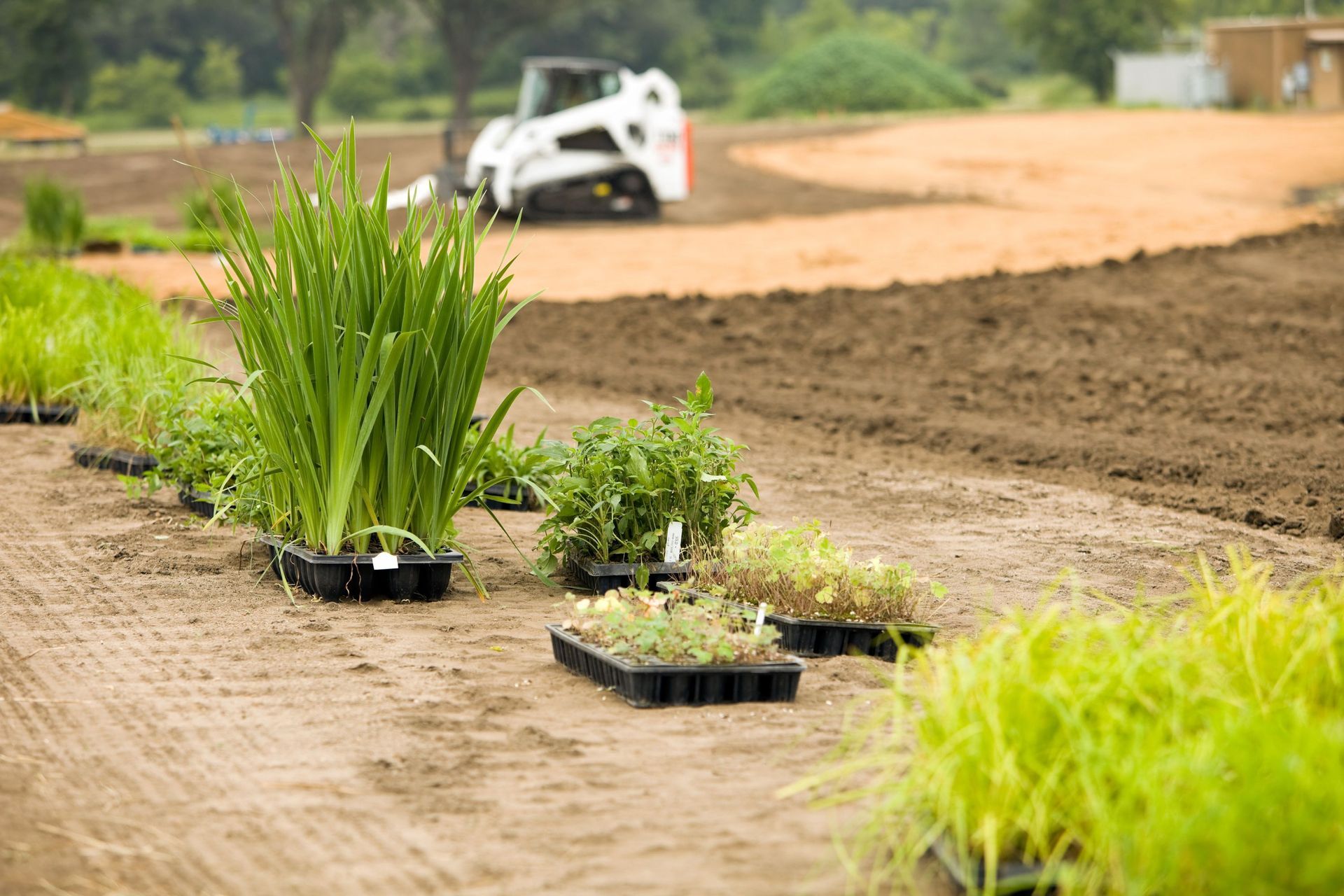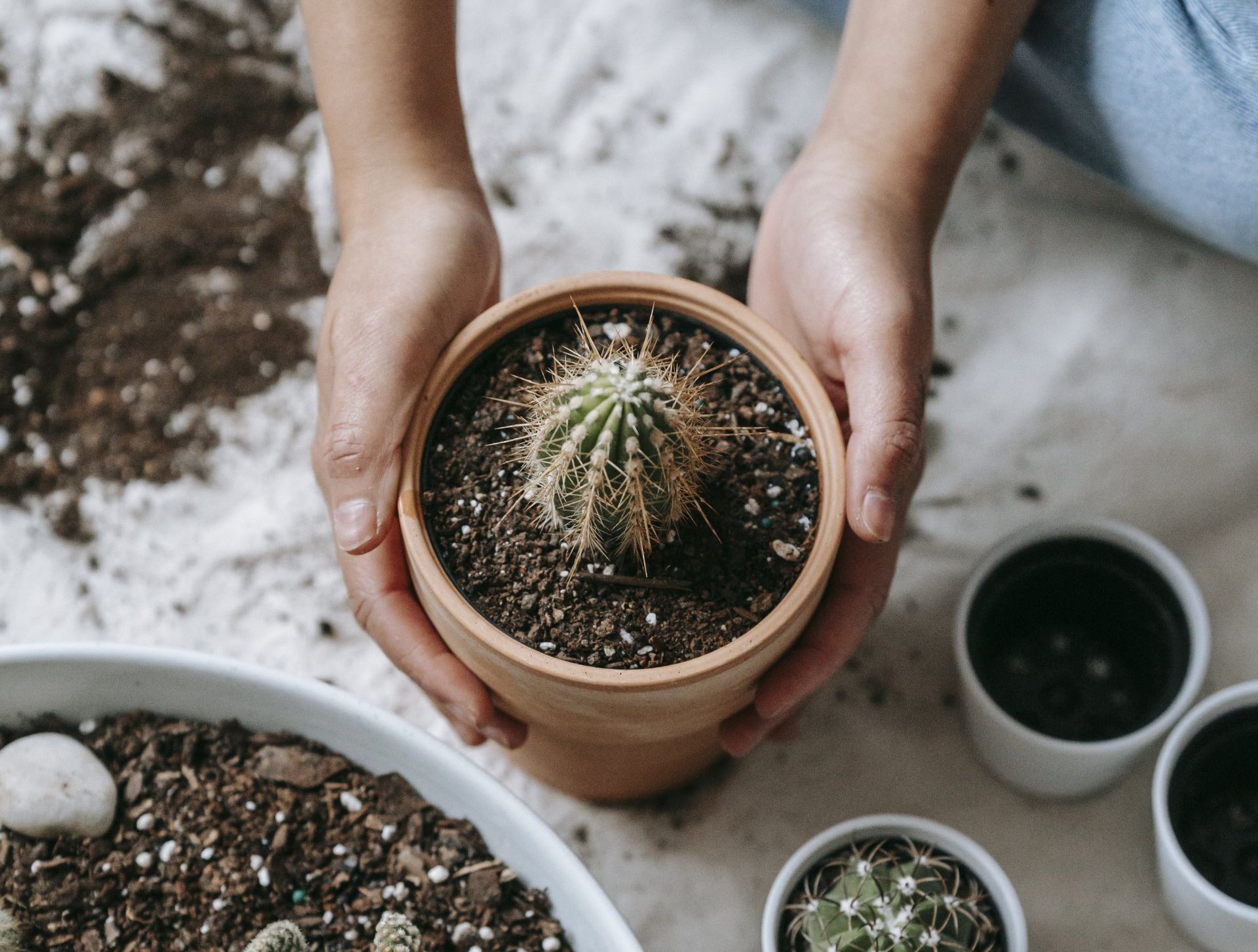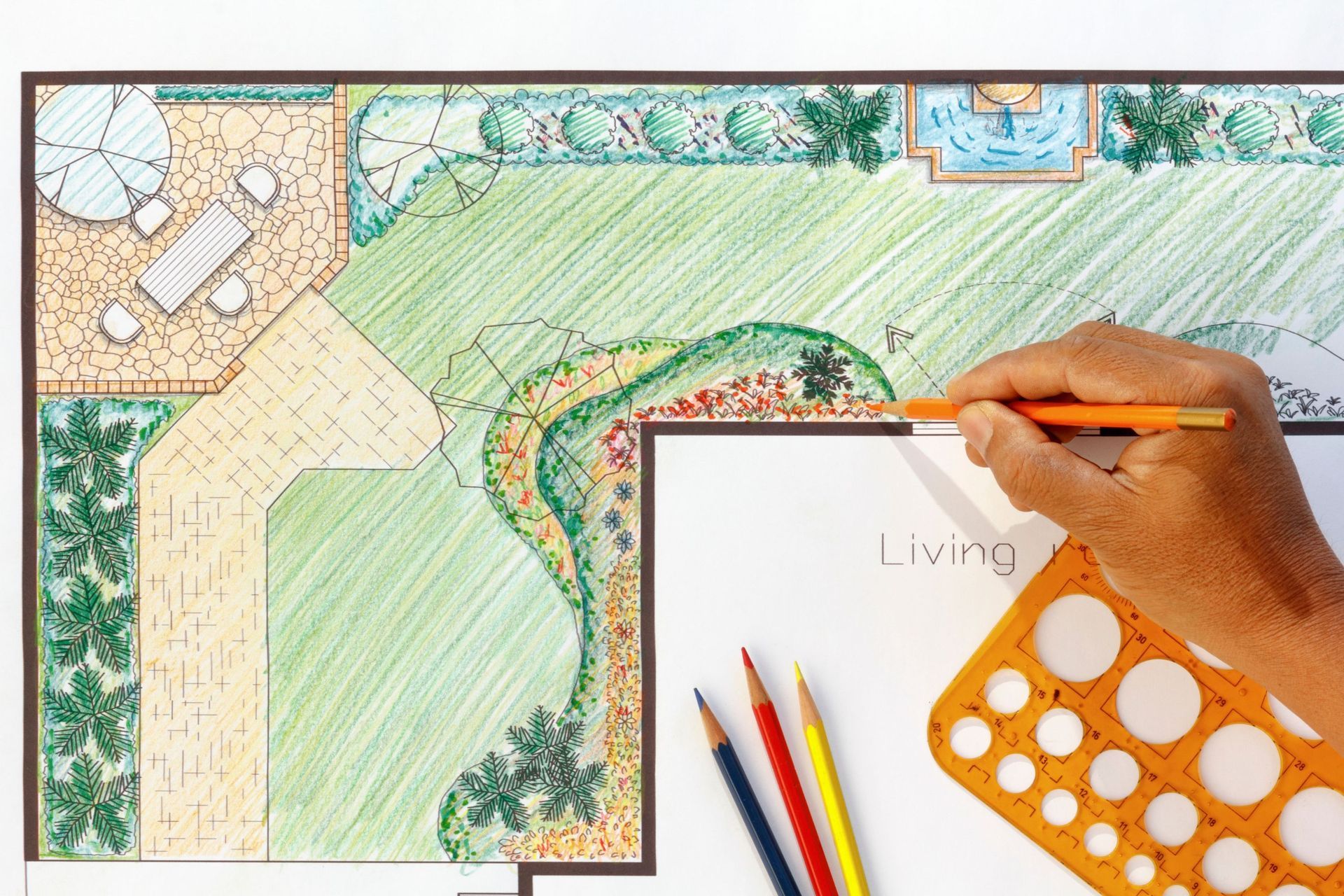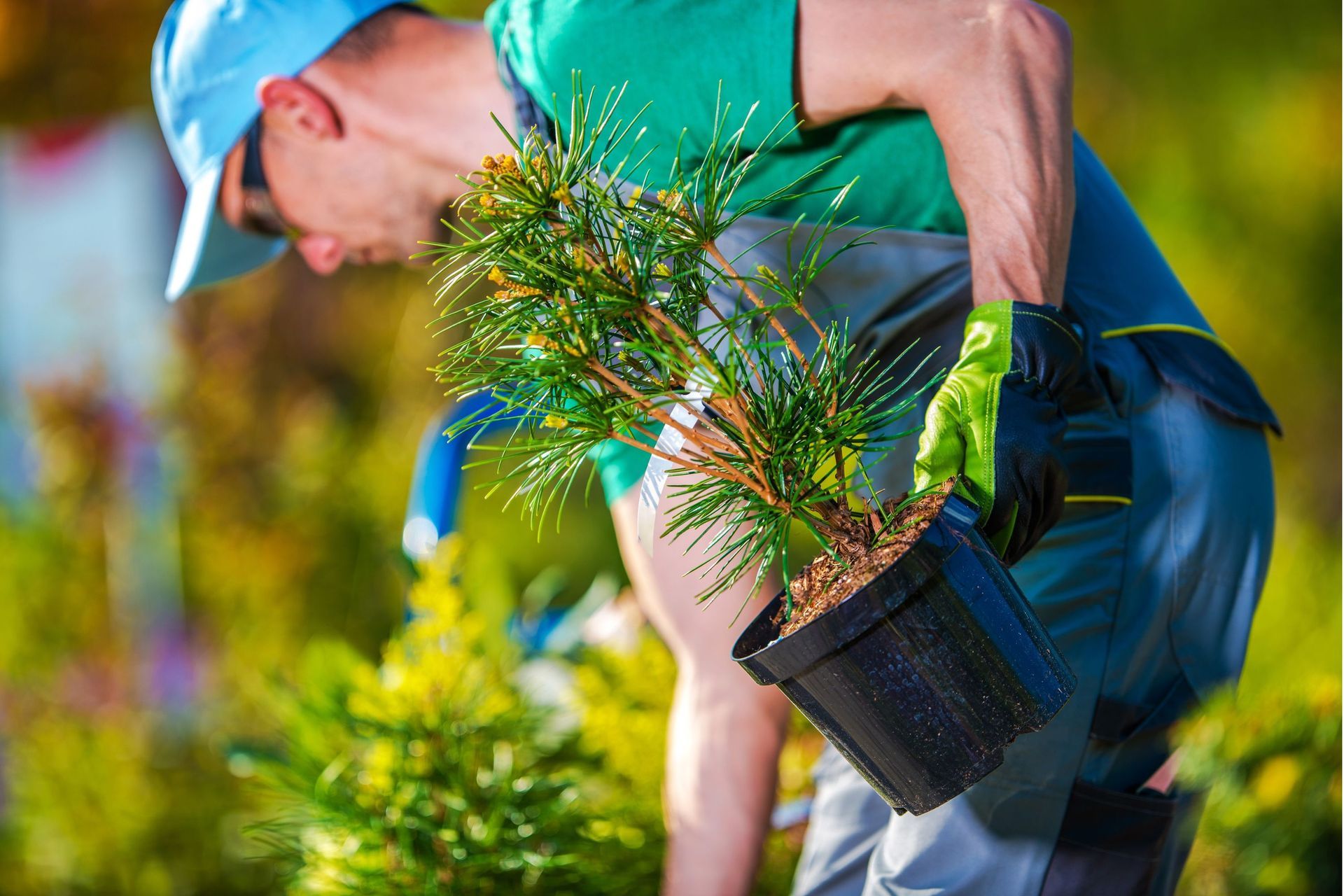Landscaping Services In Fresno CA
At our Fresno, CA-based landscaping service, we specialize in a broad spectrum of activities aimed at enhancing the aesthetic appeal and functionality of outdoor spaces. Our primary focus on softscaping involves the careful selection, arrangement, and nurturing of a variety of plants, shrubs, trees, and flowers. Softscaping is essential for creating lush, vibrant gardens and yards that not only look beautiful but also foster a serene and inviting atmosphere in the unique climate and environmental conditions of Fresno.
Key Services We Offer in Fresno, CA
- Landscape Construction: At the core of transforming any outdoor area, our landscape construction services include building hardscapes such as patios, walkways, and retaining walls. These are complemented by softscaping elements like sod, native trees, and flowering plants that thrive in Fresno's Central Valley climate. Our construction process ensures that each outdoor space is not only aesthetically pleasing but also functional, providing perfect areas for relaxation and enjoyment under the Fresno sun.
- Drought Resistant Xeriscaping: Considering Fresno's dry, hot climate, our xeriscaping service is a prudent choice that minimizes the need for irrigation. We select drought-resistant plants and enhance soil to retain moisture, designing gardens that effectively conserve water. Our xeriscaping approach not only aids in water conservation but also significantly reduces maintenance and utility costs, making it an environmentally and economically wise option.
- Landscape Design: Our landscape design services in Fresno merge artistic vision with practical application. We create detailed blueprints for outdoor spaces that align with the local climate, topography, and prevalent architectural styles. Our designs ensure that outdoor areas are perfectly tailored to our clients' preferences and functional needs, promoting a cohesive and sustainable environment.
- Landscape Renovations: Our landscape renovations focus on updating existing gardens and outdoor areas to enhance their beauty and utility. We might refresh plant beds with climate-appropriate vegetation, install new water-efficient turf, or add features like fire pits or outdoor kitchens suited to Fresno's warm evenings. Our renovations maintain the landscape’s attractiveness and adapt to our clients’ changing lifestyles or environmental conditions.
- Planting Services: As a central aspect of our softscaping efforts in Fresno, our planting services involve expert selection and installation of plants that are well-suited to the local environment. We ensure that the plants we choose not only enhance the yard’s beauty but also thrive in Fresno’s conditions, considering factors like heat tolerance and water efficiency. Our professional planting services help maintain the health and visual appeal of gardens, contributing to a greener, more vibrant Fresno.
Through these tailored services, we create stunning, sustainable outdoor spaces that reflect our clients' visions while respecting and optimizing the natural environment of Fresno, CA.

As landscape construction professionals based in Fresno, we specialize in transforming outdoor spaces into beautiful and functional areas that thrive in our unique climate. In this industry, our team tackles projects ranging from residential garden makeovers to large-scale commercial landscapes. We leverage Fresno’s diverse climate, which allows for a wide range of plant species and design elements.
Our services encompass everything necessary to bring a landscape vision to life, including design, installation, and maintenance. We start by understanding our clients' needs and preferences, then craft custom plans that suit both their aesthetic desires and practical requirements. Our expertise includes planting, irrigation systems, hardscaping with native stones, and constructing outdoor features like patios and pergolas.
Being in Fresno, water conservation is always a top priority for us. We integrate drought-resistant plants and innovative irrigation solutions to create sustainable landscapes. Whether enhancing curb appeal or designing a peaceful backyard retreat, our goal is to provide exceptional service and lasting value to our clients in Fresno and beyond.

Drought-resistant xeriscaping is a landscaping philosophy designed to reduce or eliminate the need for supplemental water from irrigation. It is especially relevant in regions with arid climates, such as many parts of the Southwestern United States. This approach is both environmentally friendly and economically beneficial, as it significantly cuts down on water usage, helping to conserve this precious resource while also reducing homeowners' utility bills.
Xeriscaping centers around the selection of plants that are native to the area or adapted to thrive in low-water conditions. These might include succulents, cacti, and various perennial grasses and shrubs that require minimal hydration beyond natural rainfall. The design often incorporates features such as rock gardens, gravel paths, and mulched areas that help retain soil moisture and reduce evaporation.
In addition to plant selection, drought-resistant xeriscaping focuses on soil improvements that enhance water retention. Adding organic matter to the soil or using specially designed water-retentive products can help landscapes thrive even in drought conditions. Efficient irrigation systems, such as drip irrigation or soaker hoses, are sometimes used to deliver water directly to the plant roots, minimizing waste.
Overall, drought-resistant xeriscaping is a practical, sustainable choice for gardeners and property owners who wish to maintain attractive, healthy landscapes without relying heavily on water resources. This approach not only preserves the natural aesthetic of the region but also supports biodiversity by providing habitats for local wildlife.

Landscape renovations involve the revitalization of existing outdoor spaces to improve their functionality, aesthetic appeal, and sustainability. This process is crucial for both residential and commercial properties that aim to update their exteriors, correct landscape issues, or adapt to changing uses and preferences. Renovations can range from simple makeovers, like planting new flower beds, to comprehensive overhauls that might include redesigning the entire layout.
Key components of landscape renovations often involve the removal of outdated or overgrown vegetation and the installation of new, more suitable plant species. These updates prioritize native plants that are well-adapted to the local climate and soil conditions, thereby reducing maintenance and water needs. Renovation projects also frequently replace or repair hardscape features such as walkways, patios, and decks to enhance safety and increase curb appeal.
Incorporating modern irrigation systems is another common aspect of landscape renovations. These systems are designed to use water more efficiently, which is particularly important in areas with water scarcity issues. Smart irrigation technologies, such as sensors and programmable controllers, can significantly reduce water waste by adjusting watering schedules based on weather conditions and soil moisture levels.
Overall, landscape renovations are about more than just beautifying a space; they also aim to create sustainable, functional outdoor areas that meet the current needs of users while respecting the environment. This approach not only enhances the visual appeal of the property but also contributes to a healthier, more enjoyable outdoor environment.

Landscape design is an artistic and technical discipline that involves creating and organizing outdoor spaces to achieve environmental, social-behavioral, and aesthetic outcomes. It combines elements of art, science, and environmental engineering to design landscapes that are both beautiful and functional. This field requires a deep understanding of the natural environment, including climate, soil types, and native vegetation, as well as the needs and desires of the people who will use the space.
The process of landscape design typically starts with a detailed analysis of the site and a client consultation to determine the project's goals and specifications. The designer then creates a conceptual design that integrates various components such as plantings, hardscapes (like walkways and patios), water features, and lighting. The goal is to create a harmonious and sustainable environment that complements the surrounding architecture and natural features.
In residential settings, landscape design can help to extend living spaces outdoors, increase property value, and enhance the home’s curb appeal. For commercial properties, good landscape design can make a business more attractive to potential customers and provide a pleasant environment for employees.
Sustainability is a crucial aspect of modern landscape design. Designers often incorporate eco-friendly practices, such as using native plants that require less water and maintenance, designing rain gardens to manage stormwater runoff, and choosing materials that are locally sourced and produced sustainably.
Overall, landscape design is about creating cohesive, visually appealing outdoor spaces that meet the specific needs of the users while also ensuring the health and sustainability of the environment.

Planting services encompass a range of professional offerings designed to enhance and beautify outdoor spaces through the strategic selection and placement of plants. These services are essential for both residential and commercial properties, helping to create aesthetically pleasing environments that can also improve air quality and reduce noise pollution.
The process typically begins with a consultation to understand the client's vision, preferences, and the specific climatic and soil conditions of the site. This initial stage is crucial for ensuring that the chosen plants will thrive in their new environment. Planting services often involve a detailed plan that includes the types of plants to be used, their optimal locations, and the style of the planting arrangement, whether it's formal, naturalistic, or thematic.
Professionals in this field are skilled in selecting plants that are appropriate for the local climate and soil conditions. This might include native species known for their resilience and lower maintenance needs, or exotic plants that add a unique aesthetic touch. In addition to aesthetic considerations, these services can also focus on practical benefits, such as using trees and shrubs to enhance privacy, create shade, or act as windbreaks.
Moreover, planting services can incorporate sustainable practices such as mulching to retain soil moisture, choosing drought-tolerant species to reduce water usage, and employing organic gardening techniques to minimize the impact on the environment.
Overall, planting services not only contribute to the visual appeal of a property but also promote biodiversity and support the ecosystem, making outdoor spaces more inviting and environmentally responsible.

